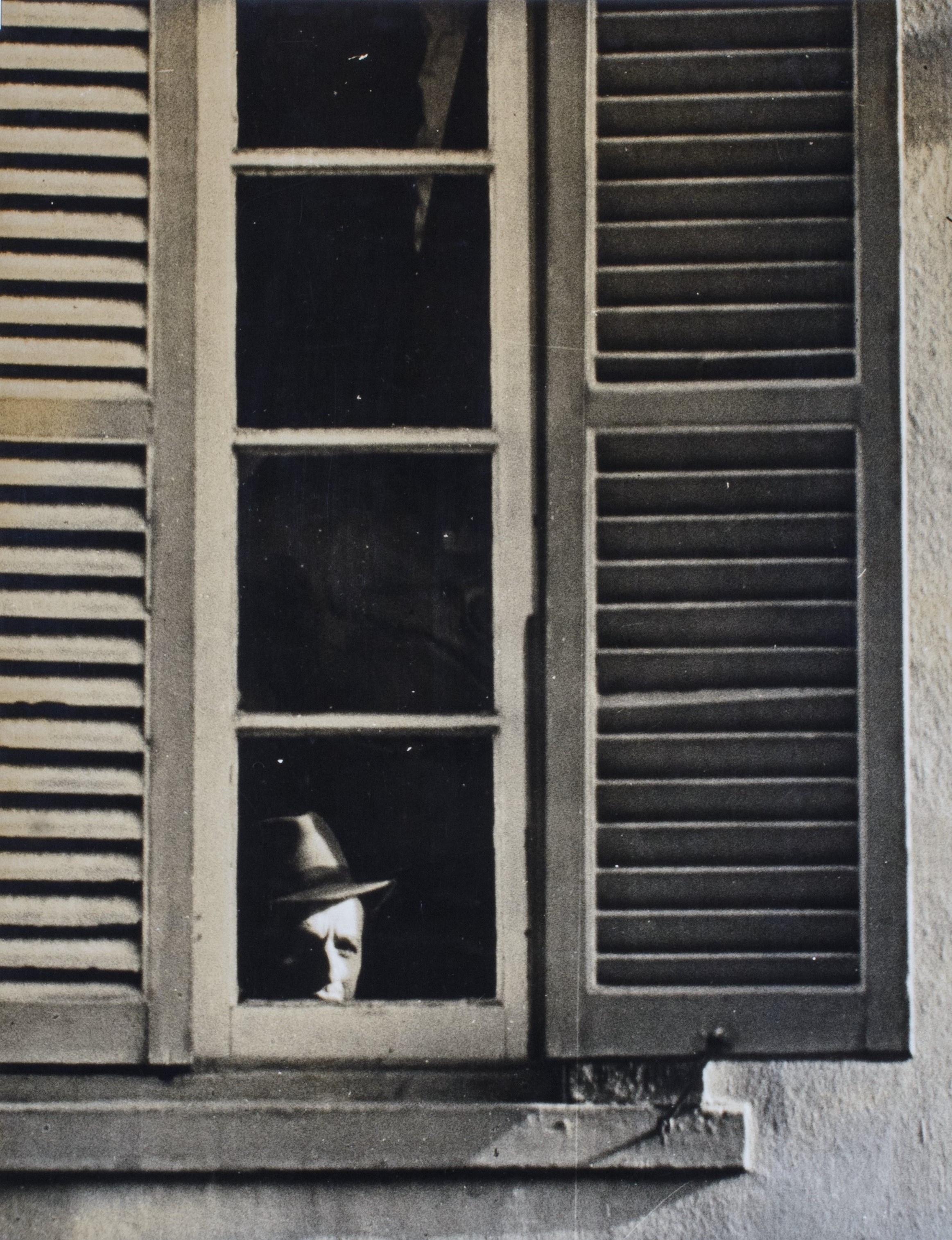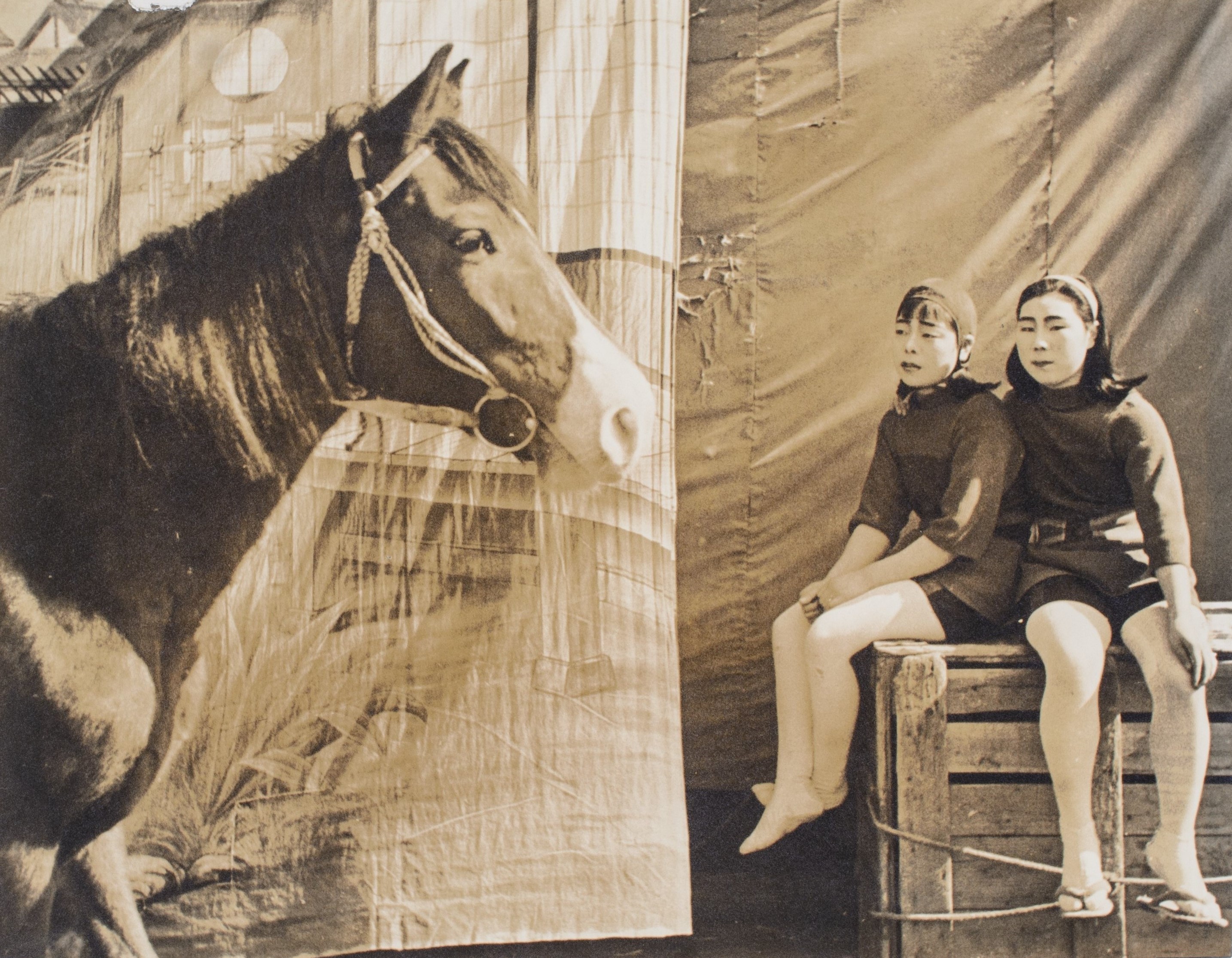YASUI NAKAJI 1903-1942: PHOTOGRAPHS
HAPPENINGText: Alma Reyes
The third part of the 1930s section exposes images inciting the surrealistic style. In the mid-1930s, New Photography gradually declined and instead, gave way to themes suggesting hidden elements behind objects. These were articulated in an abstract and poetic manner. Examples are (Insect) (c.1938) and (Composition: Cow Bone) (c.1938).

Nakaji Yasui, Seaside, 1938, Private collection. On deposit at Hyogo Prefectural Museum of Art, Photo: Alma Reyes
An eye-catching work Seaside (1938), was taken at Kaizuka Beach in Osaka Prefecture, where a photo session among photographers was held. The lines formed by wood planks pointing towards the dark-shadowed group of photographers and small boats produce a brilliant perspective.

Nakaji Yasui, Displaced Jews: Window, 1941, Private collection (on deposit at Hyogo Prefectural Museum of Art)
Yasui’s works in the final section encompassing the late 1930s to 1942 exude a lucidly humanistic quality of greater intensity. The Sino-Japanese War broke out in 1937 and constrained the activities of photographers. Yet, this restriction didn’t prevent Yasui from documenting the struggles and anxieties of the people and absurdity of totalitarianism. In 1940, Jewish refugees from Lithuania clamored to flee the Nazi occupation and were granted transit visas by the Japanese consulate to enter Kobe. Around eleven images from the series Displaced Jews, such as Displaced Jews: Window (1941) ardently trace the Jewish people’s state of fear and loss. Yasui has genuinely expressed these emotions through perfect composition of asymmetry and compelling light and shade.

Nakaji Yasui, (Horse and Girls), 1940, Private collection (on deposit at Hyogo Prefectural Museum of Art)
Simultaneously, the air of wartime somberness is complemented by pictures from circus shows, which subtly manifest similar moods of displaced characters. (Horse and Girls) (1940) reflects the occasions when Yasui took his children to Yamane Kyokubadan circus performances. Two girls with rather melancholic facial expressions face the long gaze of the horse, like split images that are joined in one stage. (Circus Woman) (1940) portrays a performer completely enveloped by fabric around her, bringing to light once more, Yasui’s unfailing touch of masterful artistry.
Yasui died of kidney failure in 1942 at such a young age of 38, but the drama of life unfolded through his camera lens will always hold a valuable place in people’s hearts. Daido Moriyama spoke of him, “I have always thought of photography in Japan as having been initiated by Nakaji Yasui. The range and depth of his vision, the freedom and flexibility of his thoughts are incomparable…”
Yasui Nakaji 1903-1942: Photographs
Date: February 23rd – April 14th, 2014
Opening Hours: 10:00 – 18:00 (Fridays till 20:00)
Closed on Mondays (except April 8th)
Place: Tokyo Station Gallery
Address: 1-9-1 Marunouchi, Chiyoda-ku, Tokyo
Tel: +81 (0)3 3212 2485
https://www.ejrcf.or.jp/gallery/english/
Text: Alma Reyes




